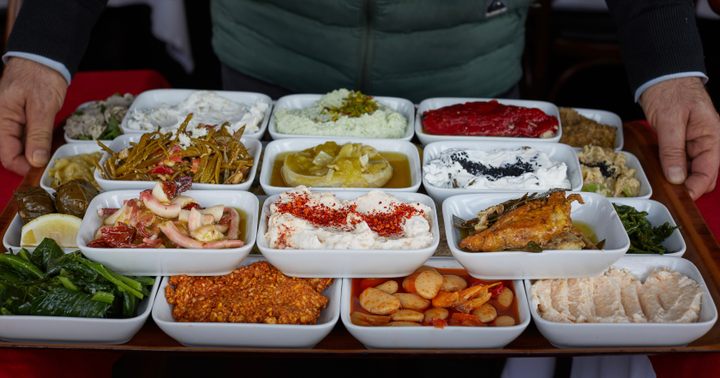

Gastro Obscura’s Essential Places to Eat and Drink in Istanbul
Author and part-time Istanbul resident Anya von Bremzen shares where to find goat’s milk ice cream, slow-roasted lamb, and more.
Istanbul, former seat of the Byzantine and Ottoman empires, a city astride two continents, is drawing record numbers of international visitors these days. They are here for the grand imperial mosques and historic bazaars, for the glittering vistas and the romantic ferry rides on the Bosporus, the magical strait that separates and connects Europe and Asia.
Besides the obvious tourist attractions, there’s the city’s fascinating many-layered cuisine to discover, from subtly spiced pilafs and stuffed vegetables perfected in the kitchens of Ottoman palaces to smoky kebabs brought to the city by migrants from the country’s southeast, to the mosaics of meze and all manner of street food.
Perhaps as a legacy of the Ottoman guild system, Istanbul’s traditional restaurants tend to specialize in particular genres. And locals adore their city’s strictly codified food rituals. At a kebapçi (kebab house), your menu will always lead from the umami of goat’s milk Tulum cheese to a parade of skewers to a syrup-drenched künefe sweet.

At a balikçi (a fish house) by the Bosporus, one will savor simple grilled fish preceded by meze like fluffy eggplant dip and cured bonito called lakerda. For homey steam-table lunches big on flavor and conspicuously free from booze, one goes to an esnaf lokanta, literally a tradesmen’s canteen.
At night, the city’s secular-minded folk will do their drinking—plus plenty of eating—at meyhanes, taverns traditionally run by non-Muslim minorities. And of course Istanbul’s dining culture evolves. Rooftop cocktails and nibbles with glorious views have become a genre in itself, while new arrivals to the city from places like Syria or the former USSR bring their flavors to Istanbul’s immigrant neighborhoods.
Beyond the historic Sultanahmet district, this megalopolis of over 15 million featuring three bodies of water can be geographically daunting. But whether by tram or scenic ferry or taxi my favorite examples of Istanbul’s different specialties are worth traveling for.

Kanaat Lokantasi
In business since 1933 and still expertly run by the descendants of the Albanian brothers who founded it, this bustling stalwart near the Uskudar ferry landing offers an encyclopedic primer of Turkish cuisine classics. Make sure to try their stuffed vegetables, homey stews, and their Uzbek-style pilaf, saving room for the famously creamy Ottoman puddings and goat milk ice cream.

Buuzecedi
Syrians who’ve been fleeing to Istanbul from the civil war in their country do much of their eating and shopping on the busy Akşemsettin street in the district of Fatih. This enormously popular legume-centric place with two branches along the same street is their source of the rich chickpea and fried bread dish called fatteh. It also serves the creamiest hummus in Istanbul, as well as the city’s crispest falafel.

Bar at Biz Istanbul
To create its menu of Istanbul classics, this new restaurant with jaw-dropping vistas enlisted some of the country’s top food scholars and academic historians. Besides killer cocktails, the bar menu entices with slightly modernized takes on Istanbul’s iconic street foods from kumpir (stuffed potatoes) to kokoreç (flame-roasted offal), along with charcuterie from the city’s best-loved purveyors.

Inciralti Meyhanesi
This beloved meyhane (drinking tavern) on the Asian shore of the Bosporus is unknown to most tourists but always buzzing with locals. Sit in a beautiful garden dominated by a huge fig tree, and choose your feast from the meze tray crowded with small plates of garlicky dips, cured fish, and dolmas made from recipes often culled from old cookbooks. Hot dishes, like kofte (meatballs) and grilled octopus, are also exceptional.

Lacivert
Having grilled or fried fish with a view of the Bosporus at one of the city’s many balikci (fish restaurants) is a quintessential Istanbul pleasure. This new remake of a 25-year-old classic is pure perfection—from its location that seems to float on the water to the sharp renditions of classic meze like lakerda (cured bonito), and impeccable mains like grilled cipura (branzino) or aromatic steamed local mussels.

Siirt Şeref Büryan
In Istanbul’s Fatih district, near the massive stone arches of a Roman-era aqueduct, there’s a fascinating Kurdish area crowded with traditional regional butchers, spice shops, and restaurants. Most of the eateries here specialize in a dish called büryan kebap, a carnivorous marvel of crispy-skinned lamb slow-roasted in an underground oven, cut into chunks, and served over quilted flatbread to soak up the juices. An excellent take on this meaty classic from southeastern Turkey is found at Siirt Seref Buryan, whose owners claim to have been in the pit-roasted business since 1892. The sprawling restaurant also excels in such Kurdish treats as perde pilav, sweetly spiced rice baked inside flaky pastry.
Gastro Obscura covers the world’s most wondrous food and drink.
Sign up for our regular newsletter.


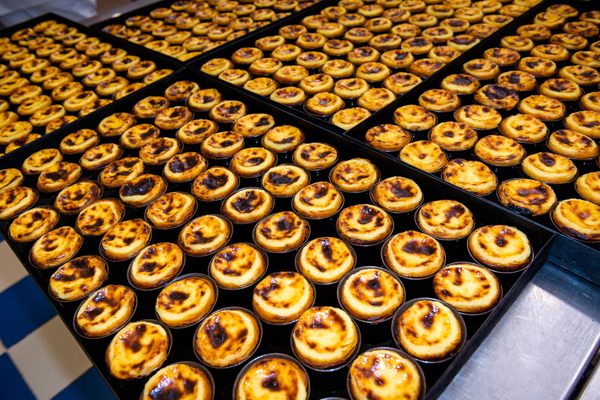


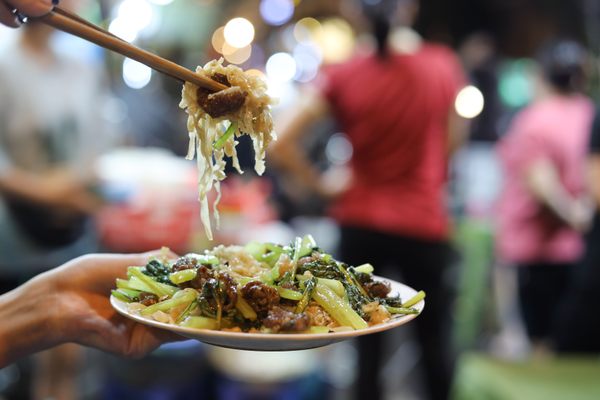














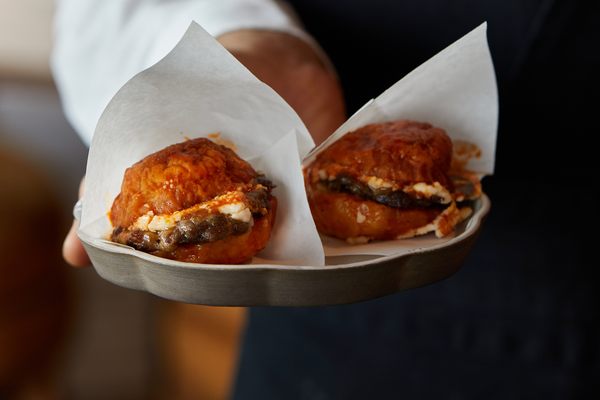
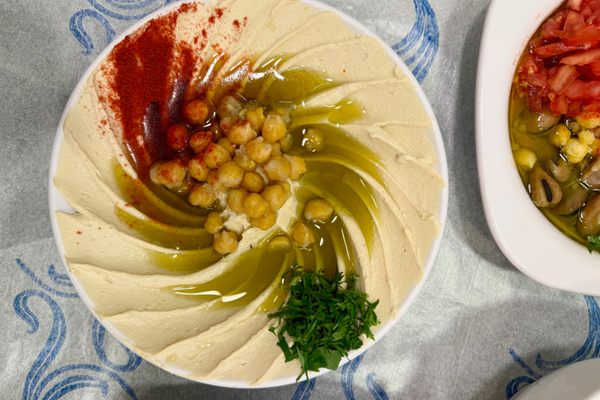



Follow us on Twitter to get the latest on the world's hidden wonders.
Like us on Facebook to get the latest on the world's hidden wonders.
Follow us on Twitter Like us on Facebook